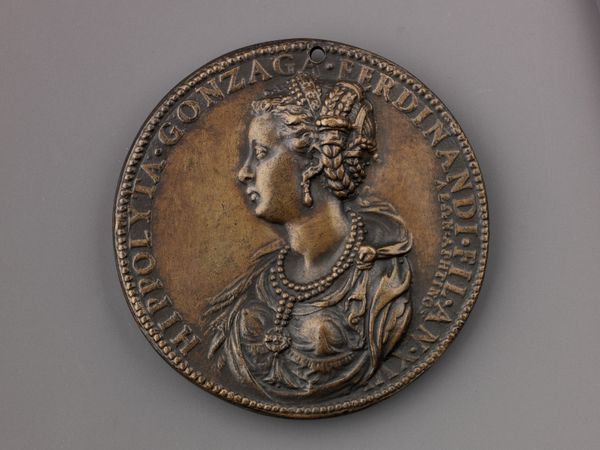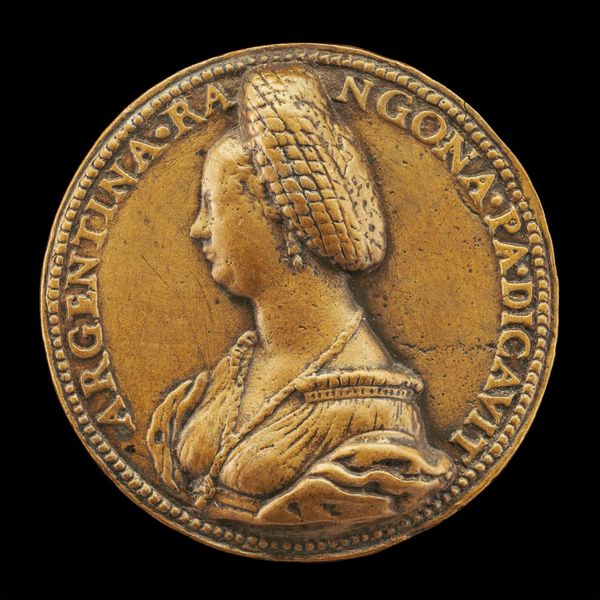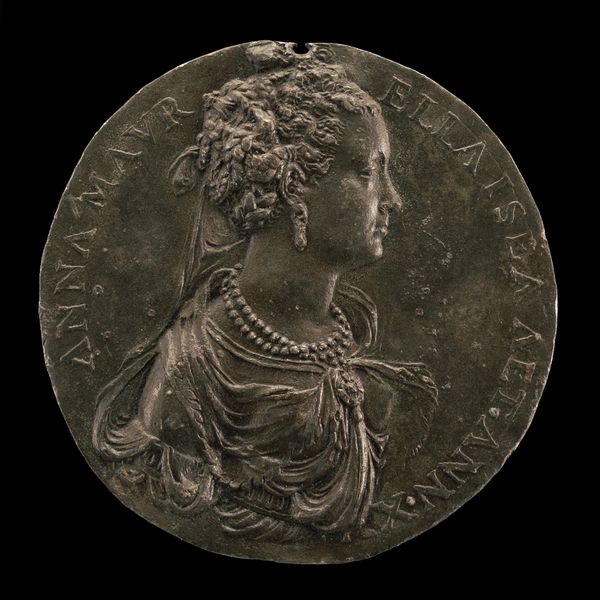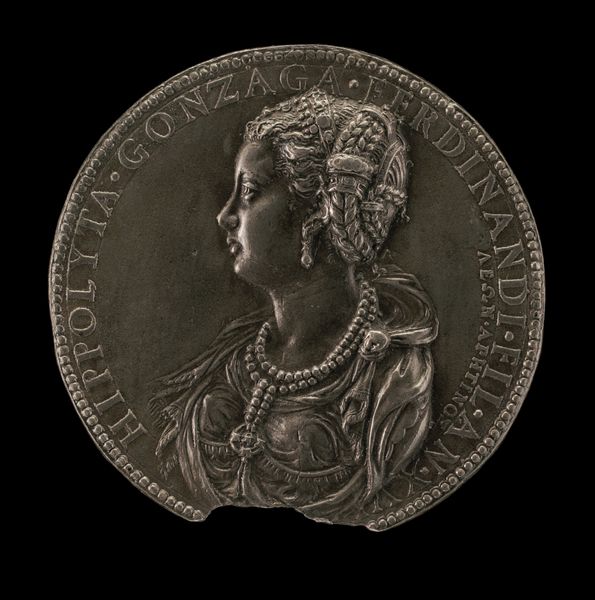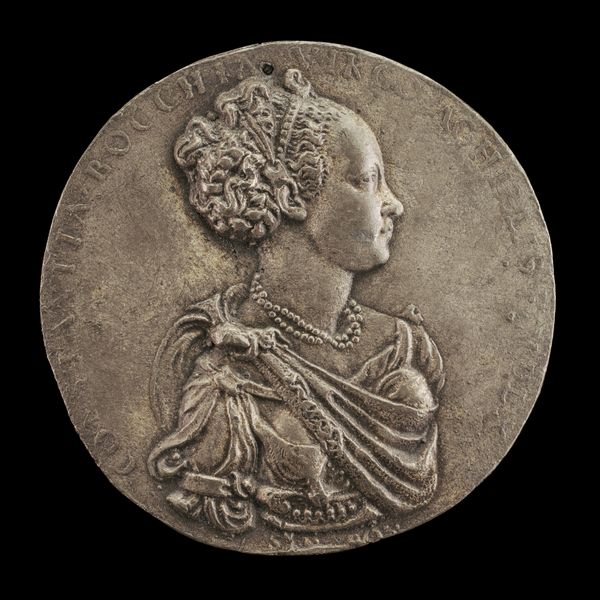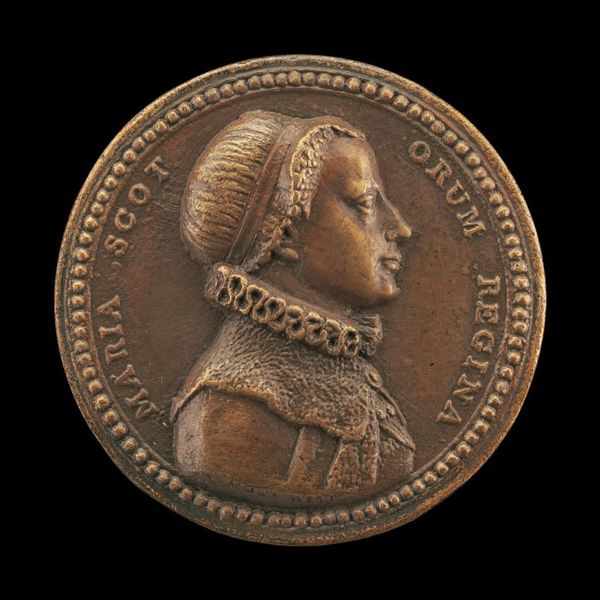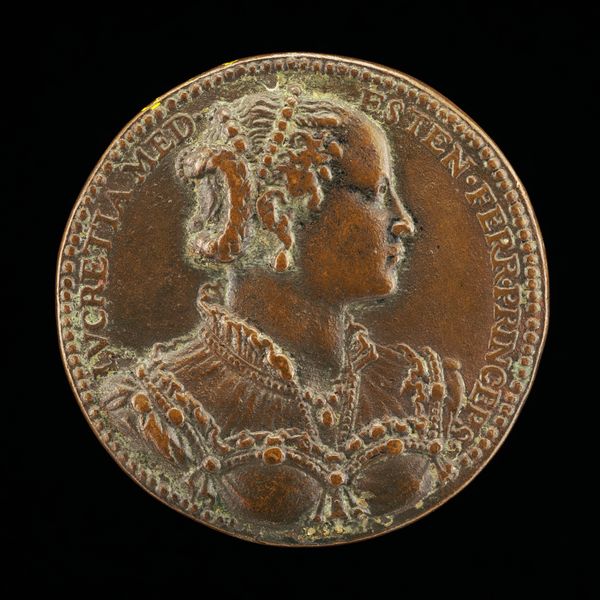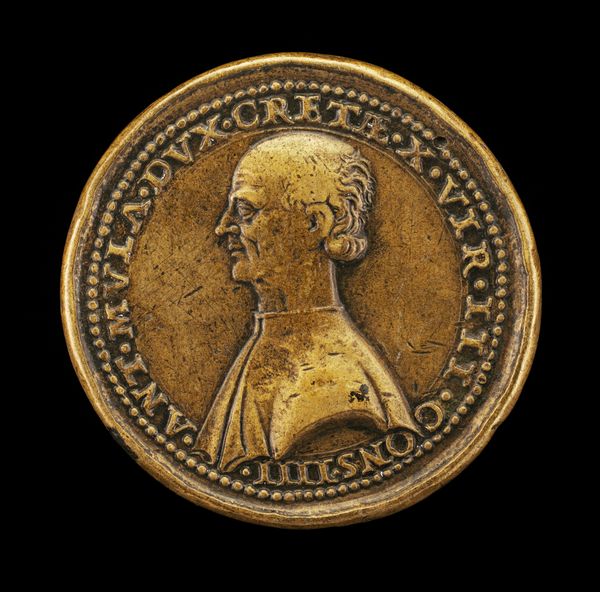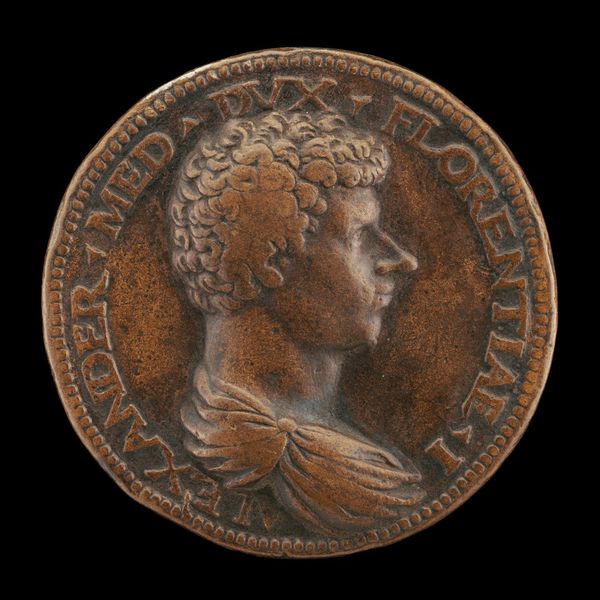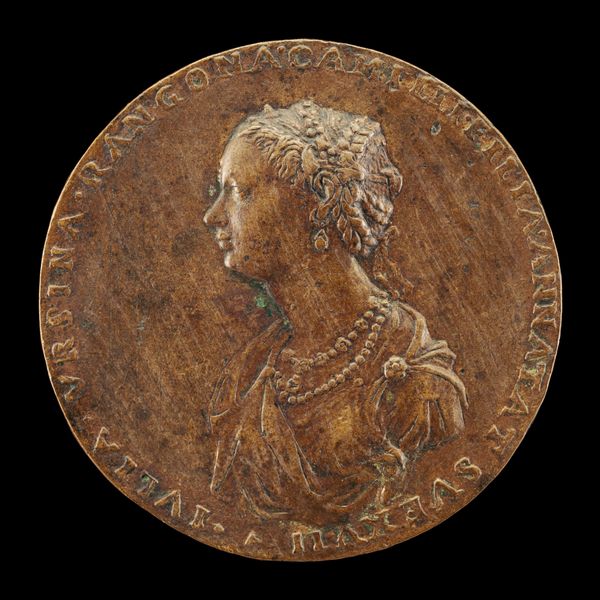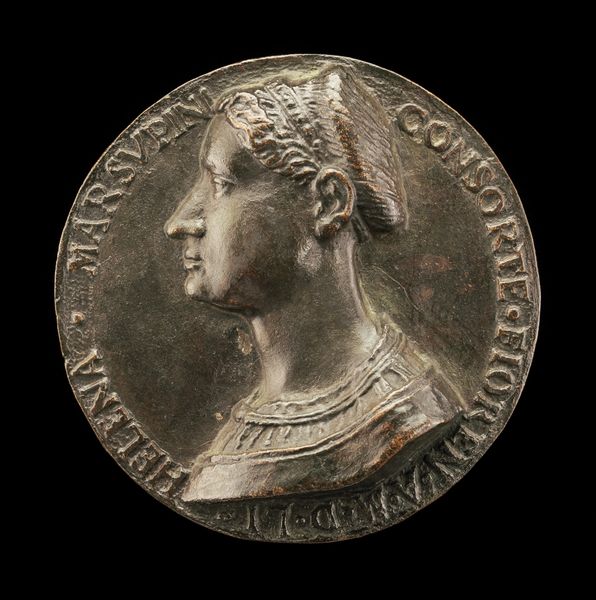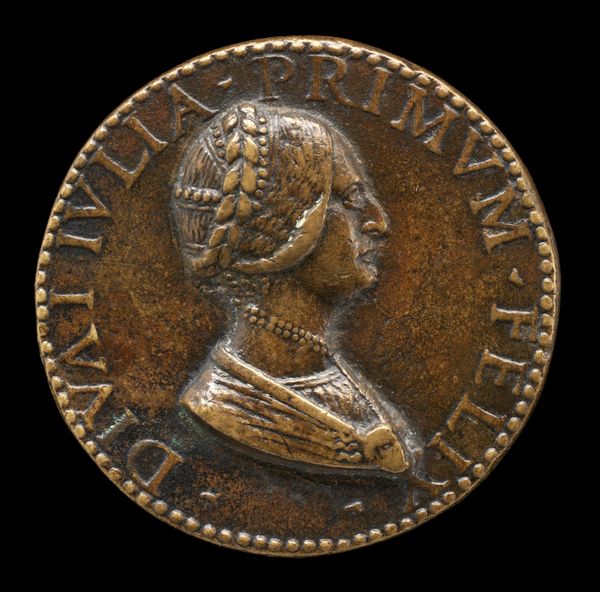![Ippolita Gonzaga, 1535-1563, daughter of Ferrante Gonzaga [obverse] by Leone Leoni](/_next/image?url=https%3A%2F%2Fd2w8kbdekdi1gv.cloudfront.net%2FeyJidWNrZXQiOiAiYXJ0ZXJhLWltYWdlcy1idWNrZXQiLCAia2V5IjogImFydHdvcmtzL2NlODgzOTQ4LTU3NjQtNGZkOC1hZTVkLTA0ZDM2NWQ3OGYzZC9jZTg4Mzk0OC01NzY0LTRmZDgtYWU1ZC0wNGQzNjVkNzhmM2RfZnVsbC5qcGciLCAiZWRpdHMiOiB7InJlc2l6ZSI6IHsid2lkdGgiOiAxOTIwLCAiaGVpZ2h0IjogMTkyMCwgImZpdCI6ICJpbnNpZGUifX19&w=3840&q=75)
Ippolita Gonzaga, 1535-1563, daughter of Ferrante Gonzaga [obverse] 1551
0:00
0:00
bronze, sculpture
#
portrait
#
medal
#
sculpture
#
bronze
#
sculpture
#
italian-renaissance
Dimensions: overall (diameter): 6.8 cm (2 11/16 in.) gross weight: 95.47 gr (0.21 lb.) axis: 12:00
Copyright: National Gallery of Art: CC0 1.0
Curator: Let’s turn our attention to this striking bronze medal created by Leone Leoni in 1551. It portrays Ippolita Gonzaga, daughter of Ferrante Gonzaga. I’m immediately drawn to the relief, the precise detail. Editor: It strikes me as a somewhat austere image. The controlled profile, the cool bronze tone—it projects an air of power, but also perhaps a carefully constructed persona. It makes me wonder what societal pressures young women faced in securing political alliances. Curator: Indeed, there is a captivating rigidity in her gaze, isn't there? Notice the line of her neck, the subtle curve of her jaw – all rendered with meticulous accuracy. Leoni, known for his Mannerist style, here presents a more classically influenced profile, but that adornment is a bit extra. The braiding atop the hair looks quite imposing. Editor: The formality aligns perfectly with the function of the piece, a dynastic proclamation. Ippolita isn’t presented as simply a woman; she is a vessel, a vehicle for cementing alliances and ensuring lineage. One might critique it from a modern feminist perspective… Curator: But observe the textural contrasts. The smooth, polished surfaces of her skin are juxtaposed with the intricately rendered details of her braided hair, jewelry, and garments. Semiotically, one may argue each contributes to meaning in the aesthetic unity of the work. Editor: That is true. However, those lavish material signifiers further underscore her restricted role. Every bead, every fold, screams "status," reminding us that her individual identity is almost subsumed by her family's agenda. Were there expectations regarding her consent to all this fanfare? Curator: We may certainly infer those societal circumstances. Considering the overall circular format, there is something self-contained about the composition, almost hermetic. Do you not concur? The piece makes few concessions to our present perspectives. Editor: It does feel quite sealed-off in a sense. As though we are looking through a time capsule that represents, rather than explains. This portrait embodies the complex push and pull between power, image, and gender during the Renaissance. Curator: Precisely! The formal qualities serve both artistic skill and propagandistic purpose. Editor: Leone Leoni presents the very real, very specific face of a powerful woman with incredible economy of form. In these types of images, the unspoken matters as much as the iconography of family identity.
Comments
No comments
Be the first to comment and join the conversation on the ultimate creative platform.

